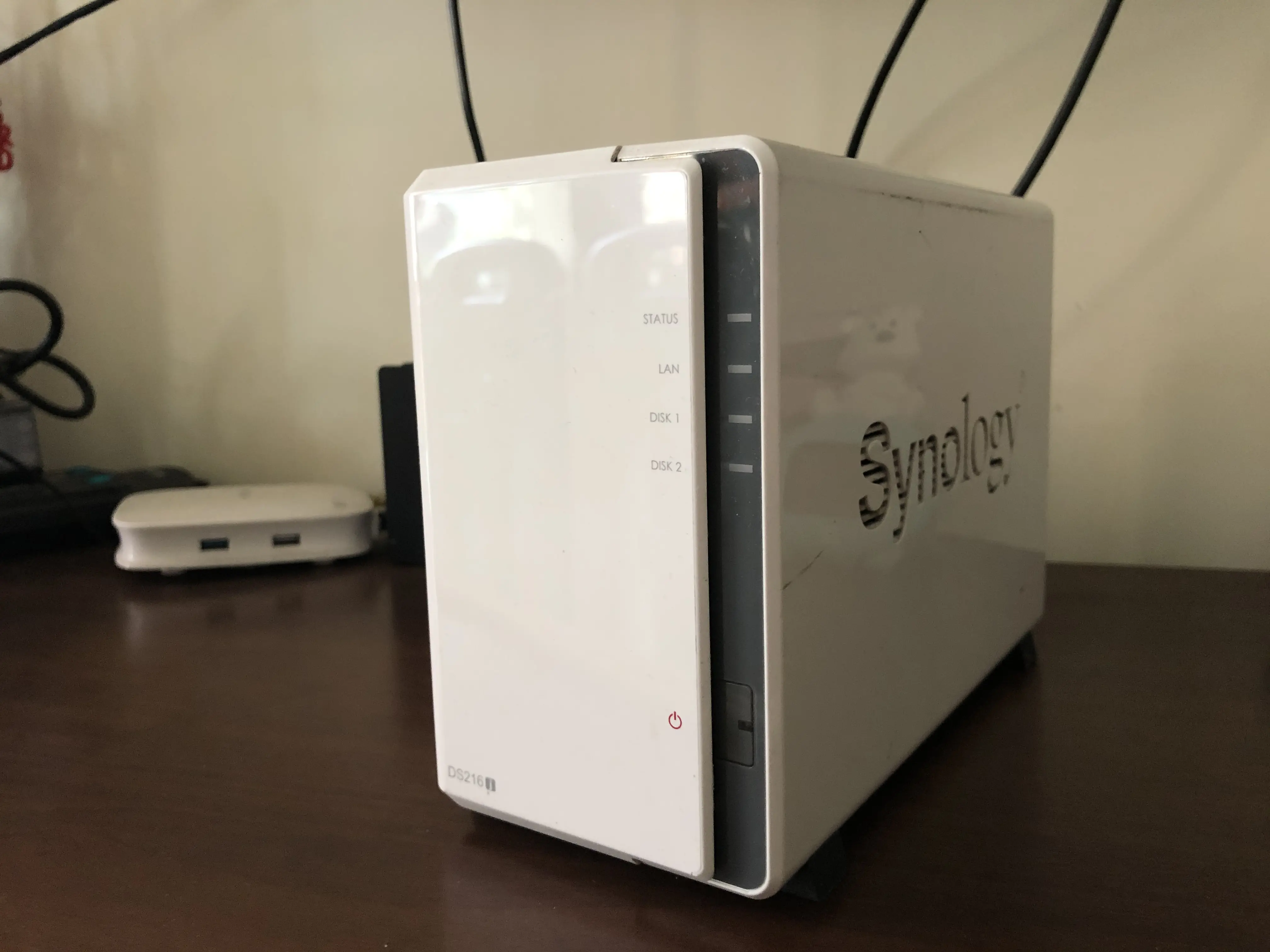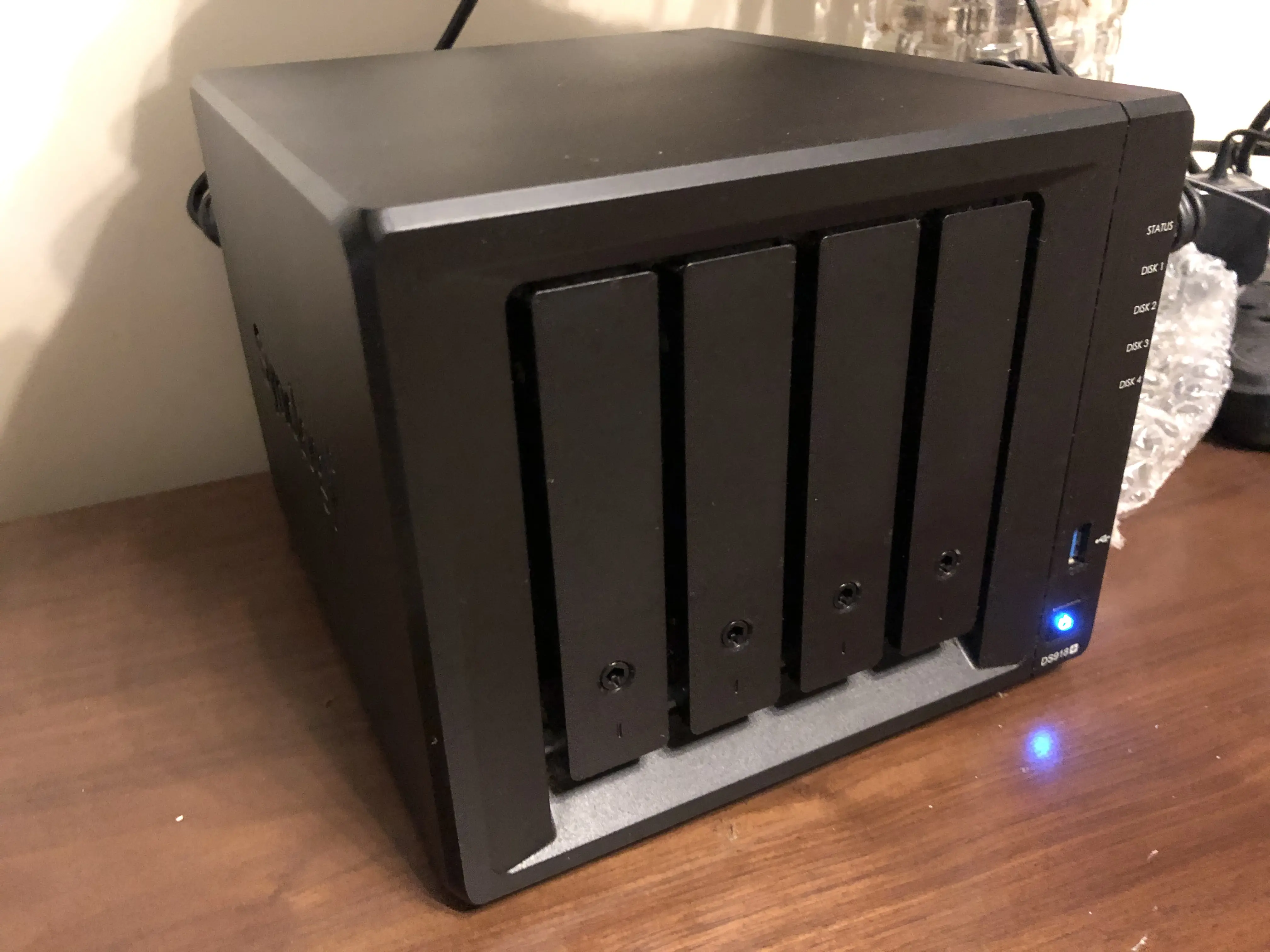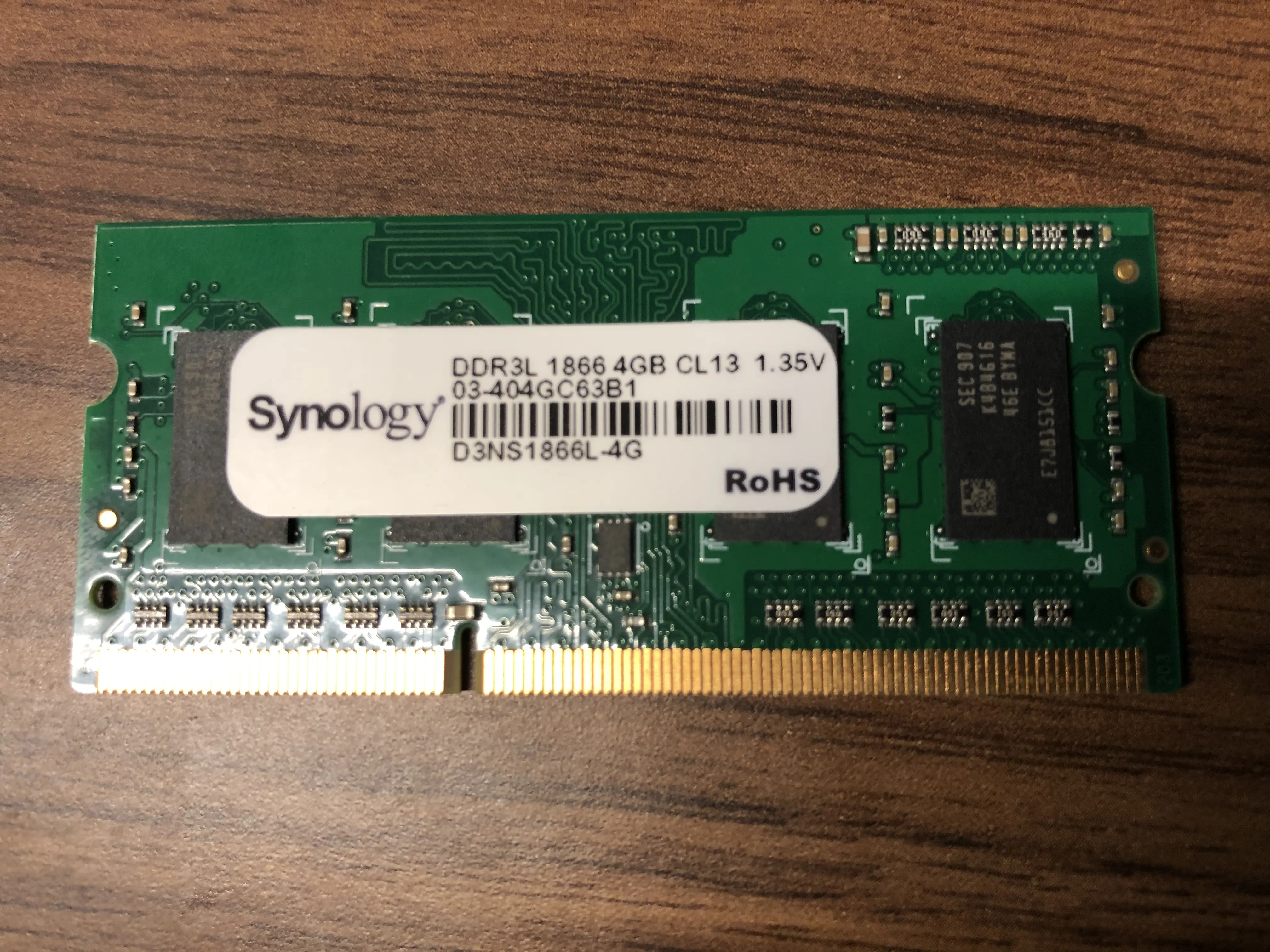Synology NAS Cookbook-1: Function and Shopping Guide 中文版
Introduction
I am a fan of personal NAS with more than 2-year experience and have recently upgraded my DS216J to DS918+ at the 618-Sale event.
As more and more friends show interest in personal NAS, it’s time to write a series of posts sharing some useful tips and my best practices.
In this first post, I will explain what NAS is and which problems it can resolve.
What is NAS?
NAS is an abbreviation for Network Attached Storage, one kind of professional device in the IT industry. It uses RAID technology which prevents data loss by redundant disks to implement a high-available and multi-protocol supporting data storage service.
Hmm… maybe it sounds exactly nothing related to our normal peaceful life. So why should we need NAS? The answer is the burst of private data.
Private Data
Since venturing into the 21st century, we have been drowned by the explosive growth of information, especially the mass amount of private data produced by our 3C(Computers/Communications/Consumer) products during daily life.
- One 200M-pixel photograph taken by shutterbug’s DC is at least 10MB
- 1-minute baby video made by mother’s iPhone is typical 40MB
- Each episode of TV show costs 3-4GB
- Laptop’s backup such as Mac’s Time Machine often needs reserved spaces as large as your main storage size, e.g., 512G
What mentioned above is just the tip of an iceberg. Don’t forget that data size should be scaled up from a family view as each member produces data, normally up to several hundreds of GB per year.
Solution One - Cloud Storage
To meet everyone’s need for taking care of growing private data, many famous tech companies launched cloud storage services:
- Google Drive
- Apple iCloud
- Microsoft OneDrive
- Baidu Cloud
- Dropbox
These big players bundle cloud storage services with their killer applications to increase market share and profits.
Yet convenient access and privacy safety are also important as a large storage volume. Compared to do-no-evil Google, Apple’s cloud is faster connected and easily used behind GFW. But aren’t you worried about privacy after Apple moved its data center to Guizhou Province if you live in the mainland?
Solution Two - Private NAS
Let me bring out the private NAS.
- RAID promises data safety and volume capacity
- As deployed at home, users have 100% control of data privacy
- Additional DDNS service configured by NAS Vendor or yourself makes external access convenient
- With workstation’s framework and stability, it can run as your private VPS
The easiest configuration UI is another most important feature designed for non-professional. Mainstream vendors also develop and maintain an integrated operating system and various applications upon it to simplify your daily operation.
Why Choose Synology NAS
I have only used two NAS models(Synology DS216J & DS918+ correspond to entry & professional level respectively) so no comparison between vendors here. In addition to well-designed hardware, Synology’s software also impressed me with its powerful functions. Many enthusiasts’ sharing experiences of installing Synology DSM on normal PCs also proof its domination in the industry from another aspect.
No more adverts here.
Synology NAS’s Shopping and Upgrade Guide
Shopping Guide
Synology has three main product lines(J/Value/Plus) of personal NAS each involves many models. So how to choose a suitable model for you? Try the following dedicated tools:
NAS Selector
A typical tool built by decision-tree. After answering a few questions about key decision points(e.g., what your working load is), this tool can filter out appropriate models.RAID calculator
This calculator helps to determine how many hard disks you need to acquire the available volume amount.
Besides these tools I have other tips:
1. Need the capability to run Docker or VM?
Almost all programmers want to deploy kinds of services on their NAS. If you were, you need models of Plus level which support virtualization technology and provide Docker in package center. Yet DS218 already has an x86_64 architecture CPU enable virtualization, it’s 2G memory becomes a threshold to run multiple docker containers.
2. Considering expandability of bays
Official SHR storage technology will make at most one of your disks spare if they all have the same capacity. e.g.,
- 2 bays mount 2 disks of nTB,then nTB available, usage factor is 50%
- 4 bays mount 4 disks of nTB,then 3nTB available, usage factor is 75%
- 5 bays mount 5 disks of nTB,then 4nTB available, usage factor is 80%
The more bays, the larger the usage factor is. Only a few models(e.g. DS718+/DS918+) support mounting more bays with an additional device. I recommend DS718+ if you are not certain of your NAS’s volume capacity for its ability to expand.
Both are key points why I upgraded DS216J to DS918+.
Upgrade Guide
It is necessary to upgrade hardware to run more docker containers:
Memory
DS918+ has two memory slots but only one installed by default. The official specification of Intel Celeron J3455 claims at most 8GB(LPDDR4 up to 2400 MT/s with 4G * 2) is supported. In my model, I installed two 8GB LPDDR3-1866MT/s and they work well. Be awareness that Synology states it has no responsibility in case you install it by unofficial memory.I bought 8GB Micron LPDDR3-1866MT at RMB 229 from TaoBao.
Cache
DS918+ supports the installation of at most two M.2 2280 NVMe SSDs as an additional cache between hard disks and memory, which speed up random read and write operations. To prevent data loss before persisting in the disk when a write operation occurs, Synology states the policy that read/write cache is only built when two SSD both installed which means if you have one SSD, you have just a read-cache. I have no data on increasing performance for the absence of a benchmark test.I bought 512G Intel 660P at RMB 229 from TaoBao which size seems too large right now with a 20% usage factor. Remember to check ‘SSD Cache Advisor’ in Your NAS’s Storage Manager Application before determining your SSD capacity.
In the End
This post focuses on NAS’s function and some personal tips about Synology’s products. Next, I will introduce some important applications and how to use them to build a software development environment.
Here are some pictures of my NAS:



Further Reading
This series
- Synology NAS Cookbook-2: How to Build Family Data Center(Backup)
- Synology NAS Cookbook-3: How to Build Family Data Center(Application)
- Synology NAS Cookbook-4: How to Access by HTTPS